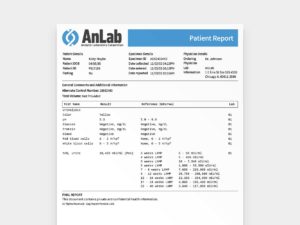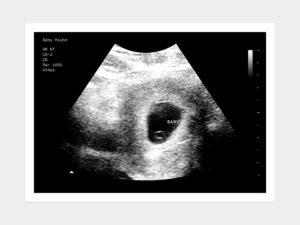
In today's world, medical advancements have made it possible for individuals and couples facing fertility challenges to fulfill their dreams of having a child. One such advancement is in-vitro fertilization (IVF), a widely recognized assisted reproductive technology. In this blog, we will explore the concept of in-vitro fertilization.
In-vitro means outside the living body and in an artificial environment. In this procedure fertilization takes place outside of the woman’s body. In-vitro fertilization is a medical procedure used to assist individuals or couples who are having difficulty conceiving naturally. Women who have severe blockages in the fallopian tubes, ovulation disorders, diminished ovarian reserve, poor egg quality, or endometriosis, IVF could be the best option for conceiving a baby. IVF could also be an option for men who have insurmountable sperm deficiencies, some same-sex couples, couples using donor eggs, or those who might need to screen embryos when there are concerns about genetic problems. During in vitro fertilization, eggs are fertilized by sperm outside of the body in a laboratory. Then one (or more) of those fertilized eggs is transferred into the uterus with the hope it will implant and result in a pregnancy — and a baby nine months later.

Ovarian Stimulation: The first step in IVF involves the administration of fertility medications to stimulate the ovaries to produce multiple eggs. This is done to increase the chances of successful fertilization. Most IVF cycles include hormone injections — usually with follicle-stimulating hormone (FSH), luteinizing hormone (LH) or both, though the precise cocktail used will be unique to you — that stimulate the ovaries. (It is also possible to do in vitro fertilization without ovarian stimulation in what is called "natural cycle IVF" or "unstimulated IVF," but those methods are uncommon). During this ovary stimulation phase, you will receive blood tests to monitor your hormone levels. When your follicles are just about ready for egg retrieval (in about eight to 14 days), you will receive an injection of human chorionic gonadotropin (hCG) or another drug such as Lupron (leuprolide) to help the eggs mature and trigger ovulation.
Egg Retrieval: Once the eggs have matured, they are retrieved from the ovaries through a minor surgical procedure called follicular aspiration. Your eggs will be ready for retrieval approximately 36 hours after the trigger hCG shot. The doctor will retrieve the eggs transvaginally with an ultrasound-guided needle that reaches your ovaries and aspirates the fluid and egg from each follicle. Most doctors try to retrieve 10 to 15 eggs per cycle, though the number could be as low as two or three or higher than 15. Egg retrieval typically takes 20 to 30 minutes and is done under IV sedation, so you won’t feel any discomfort.
Fertilization: In the laboratory, the retrieved eggs are combined with sperm obtained from either the partner or a donor. Your eggs will either be fertilized using an intracytoplasmic sperm injection (ICSI), when a single sperm is injected into an egg, or standard insemination, in which the retrieved eggs are placed in a petri dish with 50,000 to 100,000 sperm in the hopes that fertilization will happen. The culture dishes are left in a special incubator and checked 12 to 24 hours later to see if fertilization took place.
Embryo Culture: An embryologist will monitor each developing embryo over the next three to five days, looking for healthy growth and development. By day three after fertilization, the goal is to have a six- to eight-cell embryo, and by day five, there should be a healthy blastocyst.
Embryo Transfer: Usually three or five days after egg retrieval and fertilization (or if you’re using frozen embryos, whenever your uterine lining is ready for implantation), the embryo or embryos are transferred into your uterus. The number of eggs transferred will depend on your age, health, and preferences — it is recommended that women under 35 have only one or two embryos transferred. Using ultrasound guidance, your doctor will insert a thin, flexible catheter through your vagina and cervix into the uterus, and then gently depress the attached syringe containing the embryo(s), placing it in your uterus with the hope that it will implant and continue to grow just as it would with unassisted conception.
In some cases, preimplantation genetic testing (PGT) may be performed during IVF. This involves examining the embryos for genetic or chromosomal abnormalities before they are transferred. PGT can help increase the chances of a successful pregnancy and reduce the risk of certain genetic conditions.

The success of IVF varies depending on several factors, including the age of the woman, the cause of infertility, and the quality of the embryos. It's important to note that IVF success rates are not 100%, and multiple cycles may be required to achieve a pregnancy.
Here are the approximate odds of a live birth per treatment cycle based on age (assuming the use of the woman’s own eggs):
For women under age 35: 53.9 percent
For women ages 35 to 40: 26 to 40.2 percent
For women ages 41 and over: 3.9 to 12.6 percent
Multiple pregnancies, particularly with twins or higher-order multiples, can occur with IVF due to the transfer of multiple embryos. This is why healthcare providers carefully consider the number of embryos to transfer, aiming to strike a balance between maximizing the chances of pregnancy and minimizing the risk of multiple pregnancies.
Undergoing IVF can be an emotional and physically demanding procedure. It often involves multiple visits to the fertility clinic, injections, hormonal changes, and the anticipation of results. It is essential for individuals and couples to have a strong support system in place, including healthcare professionals, counselors, clergy, and loved ones.

IVF raises various ethical and legal considerations, including the storage and disposition of embryos, the use of donor sperm, and the involvement of third-party reproduction. These aspects vary across state lines and may be regulated by specific laws and guidelines. Even under the best of circumstances conflicts can arise so it is very important to consult with an attorney to fully understand the rights of the mother (egg donor) and the father (sperm donor) when considering IVF. There may also be religious considerations when undergoing IVF. Feel free to speak with your spiritual advisor for guidance.
In-vitro fertilization (IVF) is a remarkable assisted reproductive technology that offers hope to individuals and couples experiencing infertility. Through the process of ovarian stimulation, egg retrieval, fertilization, embryo culture, and transfer, IVF provides an opportunity to achieve pregnancy and build a family. Understanding the basics of IVF, its success rates, and the emotional and ethical considerations involved can empower individuals and couples to make informed decisions about their fertility. With the guidance of healthcare professionals and a strong support system, the path to parenthood becomes more accessible for those who seek it.
The information is presented as a general guide to present information on In-Vitro fertilization. It is for informational purposes only. The information provided is not intended to be the only information available about In-Vitro fertilization. The material provided is not expected to be a substitute for advice or information from your physician or health care provider.
If you have any questions, concerns, fears, apprehensions, unease, or worry about In-Vitro fertilization contact your health care provider immediately.








ALL WARRANTIES OF ANY KIND WHATSOEVER EXPRESS, IMPLIED, AND STATUTORY, ARE HEREBY DISCLAIMED. ALL IMPLIED WARRANTIES OF MERCHANTABILITY AND FITNESS FOR A PARTICULAR PURPOSE ARE HEREBY DISCLAIMED. THE PRODUCTS SOLD, INCLUDING SONOGRAMS, ULTRASOUNDS, FAKE PREGNANCY DOCUMENTS, AND FAKE PREGNANCY TESTS ARE SOLD ‘AS IS’ BASIS.
THE SITE CANNOT AND DOES NOT CONTAIN [MEDICAL/ LEGAL/ FITNESS/ HEALTH/ OTHER] ADVICE. THE INFORMATION IS PROVIDED FOR PRANKS PURPOSES ONLY AND IS NOT A SUBSTITUTE FOR PROFESSIONAL ADVICE.
ACCORDINGLY, BEFORE TAKING ANY ACTIONS BASED UPON SUCH INFORMATION, WE ENCOURAGE YOU TO CONSULT WITH THE APPROPRIATE PROFESSIONALS. WE DO NOT PROVIDE ANY KIND OF MEDICAL/ LEGAL/ FITNESS/ HEALTH ADVICE. THE USE OR RELIANCE OF ANY INFORMATION CONTAINED ON THIS SITE, OR OUR MOBILE APPLICATION, IS SOLELY AT YOUR OWN RISK.
THIS WEBSITE DOES NOT PROVIDE MEDICAL ADVICE. THE INFORMATION, INCLUDING BUT NOT LIMITED TO, TEXT, GRAPHICS, IMAGES AND OTHER MATERIAL CONTAINED ON THIS WEBSITE ARE FOR PRANK PURPOSES ONLY. NO MATERIAL ON THIS SITE IS INTENDED TO BE A SUBSTITUTE FOR PROFESSIONAL MEDICAL ADVICE, DIAGNOSIS OR TREATMENT. ALWAYS SEEK THE ADVICE OF YOUR PHYSICIAN OR OTHER QUALIFIED HEALTH CARE PROVIDER WITH ANY QUESTIONS YOU MAY HAVE REGARDING A MEDICAL CONDITION OR TREATMENT AND BEFORE UNDERTAKING NEW HEALTH CARE REGIMEN, AND NEVER DISREGARD PROFESSIONAL MEDICAL ADVICE OR DELAY IN SEEKING IT BECAUSE OF SOMETHING YOU HAVE READ ON THIS WEBSITE.
THE PARTIES AGREE THAT ANY PRODUCT PURCHASED ON THE BABY MAYBE WEBSITE SHALL NOT BE USED FOR ANY PROPOSE OTHER THAN AS A PRANK. WITHOUT EXCEPTION NO BABY MAYBE PRODUCT SHALL BE PROVIDED/SUBMITTED TO ANY GOVERNMENTAL OR OTHER AGENCY, MEDICAL DOCTOR, ARBITER OF A DISPUTE, AS PROOF OF PREGNANCY, PAST OR CURRENT, OR TO CLAIM ANY BENEFIT FOR WHICH A PREGNANT WOMAN MAY BE ELIGIBLE, OR ENTITLED TO RECEIVE, BASED ON HER BEING PREGNANT. NO HIPAA PROTECTED PATIENT HEALTH INFORMATION CONNECTED TO ANY BABY MAYBE PRODUCT, IS INTENDED, OR CONVEYED, WITH RESPECT TO THIS SALE.
THE PARTIES AGREE THAT BABYMAYBE IS NOT RESPONSIBLE FOR ANY LIABILITY WHATSOEVER FOR DELAYS IN SHIPPING THE PRODUCT. THE PARTIES FURTHER AGREE THAT THE SOLE REMEDY FOR ANY SHIPPING DELAYS IS THE REFUND OF THE PURCHASER’S PAYMENT FOR THE PRODUCT.
THE PARTIES AGREE THAT THE FORUM FOR ANY LEGAL ACTION ASSOCIATED WITH THE SALE AND PURCHASE OF THE PRODUCT IS THE STATE OF ILLINOIS.